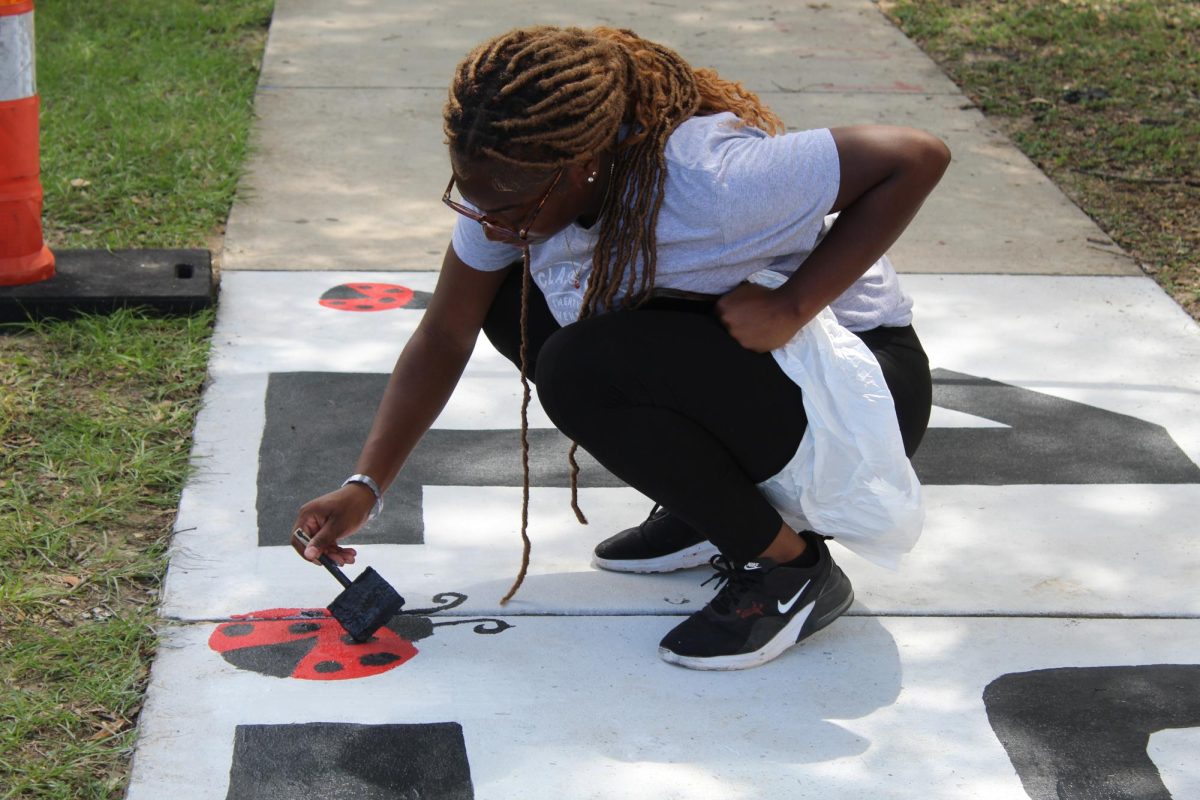“Way down yonder at the end of the road. You don’t see no birds, you don’t see no nothin’ down there where I was born,” said Clementine Hunter, who born December 1886, on the Hidden Hill Cotton Plantation, near Cloutierville, Louisiana. Due to cruel treatment from the proprietor who owned and operated the cotton plantation, Hunter was often mistreated and lived in extremely harsh conditions, until she turned five or six.
Hunter moved to a city north of Cloutierville, which was well established with churches, stores, and a catholic elementary school. Hunter attended this elementary school but disliked it, for her white peers bullied her. Hunter said that she would rather pick cotton than go to school.
After a few years in Cloutierville, her family that included seven siblings moved again, this time to the Melrose Plantation, which had a vast history of being owned by free black families including Marie Therese “Coin – Coin”. Marie Therese, a planter and businesswoman at the colonial Louisiana outpost of Natchitoches Melrose Plantation, was part of a free black family. Clementine enjoyed her time at Melrose. She loved the rolling hills, cotton fields, and pecan groves as a teenager. While at Melrose, she was part of security alongside her father patrolling the cotton fields and pecan groves until he passed away. Death was often apart of the day-to-day tragedy, while living on a plantation life. Clementine also lost two babies, her first husband, and eventually her mother and father. She ultimately met her second husband Emanuel Hunter at Melrose. He was very helpful to her and taught her how to speak English.
Clementine had many jobs at Melrose including taking care of the children, basket weaving and other domestic duties. These duties also included serving coffee and refreshments to visitors and residents of Melrose.
In 1939, Clementine found discarded tubes of paint left behind by an artist named Alberta Kinsey. She asked for permission to use the paint and since she did not have canvas, she would use milk shades, old window shades, cardboard pieces, and brown paper bags. After completing her first painting, Francois Mignon who was a prolific, gifted writer and member of the artist’s colony at Melrose recognized Hunter’s great talents.
Hunter paintings told the stories of everyday life on and around the plantation, including births, weddings, and funerals. She often painted from memory. Clementine’s paintings were full of color and hope. She even painted some paintings more than once over the years, with each one telling a somewhat different story. After Clementine’s husband Emanuel passed in 1944, her paintings were sold throughout the plantation for extra money for the family.
Her paintings first appeared in the window of Millspaugh’s drugstore in Natchitoches, Louisiana selling for only a dollar or less. A short time later, the New Orleans Museum of Art, and Delgado Museum, featured her artwork. It was her first time seeing her paintings on display. Soon after this, Mignon employed her to paint nine murals in the Melrose Plantation African House, which took her three months to complete.
Hunter received an Honorary Doctorate of Fine Arts from Northwestern State University. Clementine’s name is preserved on the famous walk of stars in the city of Natchitoches Louisiana.
Hunter died on January 1, 1988 and was buried in St. Augustine Cemetery near Melrose. Hunter was buried close to her old friend, Francois Mignon who believed in her fantastic gift of artistry. She “marked” some 5,000 paintings over her lifetime.
Categories:
Know your Louisiana History: Clementine Hunter
November 3, 2015
0
More to Discover











